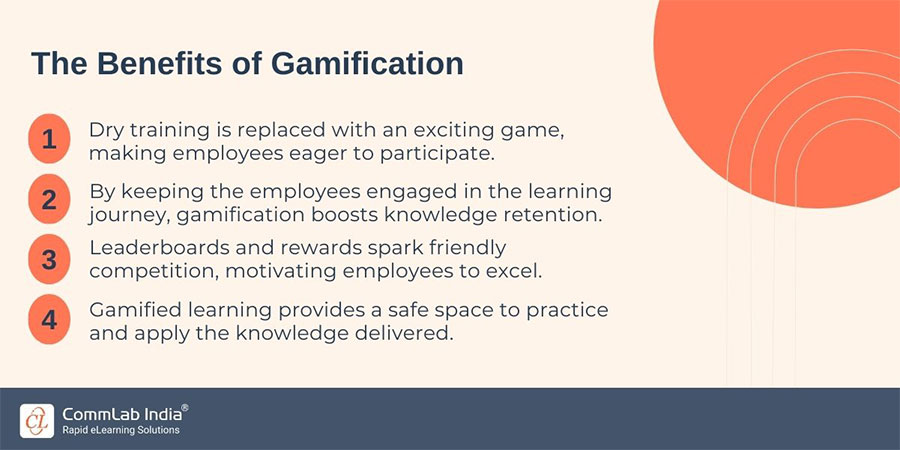How to Make Technical Training Fun & Engaging? [Strategies Decoded]
![How to Make Technical Training Fun & Engaging? [Strategies Decoded] How to Make Technical Training Fun & Engaging? [Strategies Decoded]](https://blog.commlabindia.com/hubfs/blogs/technical-training-strategies-increased-engagement%20.jpg)
Ever wondered how to turn technical training from a mundane task into an engaging adventure for your team? In the dynamic landscape of Learning and Development (L&D), the key to successful technical training lies in transforming potentially dry and complex content into engaging learning experiences. This blog discusses seven insightful strategies to inject fun and enthusiasm into your technical training programs.
Why is Engagement Important in Technical Training?
- Enhanced Understanding: Engaged learners grasp complex technical concepts more effectively.
- Real-World Application: Active involvement translates into practical application of learned skills.
- Improved Retention: Enthusiastic participation leads to better knowledge retention over time.
- Fostering Innovation: A culture of engagement stimulates continuous improvement and innovation.
What is Learner Engagement and How it Transforms Technical Training?
Learner engagement in technical training is not just a buzzword; it's a game-changer. It helps establish a genuine connection with the learning process. Engaged learners are more likely to grasp complex technical concepts, apply them in real-world scenarios, and retain knowledge effectively. This heightened engagement transforms technical training from a routine task into a dynamic and impactful learning adventure, fostering a culture of continuous improvement and innovation within the organization.
Let us now discuss the strategies for making technical training fun and engaging:
Technical Training: Strategies to Infuse Fun & Engagement
1. Gamification Galore
Infuse your technical training with gamified elements to ignite a spirit of competition, achievement, and motivation. For instance, create interactive quizzes or simulations where learners earn points for solving complex problems or mastering new skills. This gamification strategy not only transforms the learning experience into an engaging adventure but also cultivates a sense of accomplishment.
Learners can track their progress, compete with peers, and unlock virtual badges or rewards, making the training journey both enjoyable and rewarding. Gamification enhances engagement, retention, and application of technical skills, ensuring a dynamic and effective learning environment.

2. Interactive Learning Platforms
Leverage interactive online platforms to cultivate real-time collaboration and engagement in your technical training. For example, initiate a virtual team project where participants collaborate on developing a technical solution. Utilize shared documents, communication channels, and collaborative tools to facilitate seamless teamwork and knowledge exchange.
This approach not only enhances engagement but also provides learners with hands-on experience in problem-solving and teamwork, translating theoretical knowledge into practical skills. By embracing such interactive platforms, you create an environment that encourages active participation and empowers learners to apply their technical expertise in a collaborative setting.
3. Storytelling Techniques
Humanizing technical content involves embedding it within compelling narratives that resonate with learners. By crafting real-world scenarios and case studies, you can make complex concepts relatable and memorable. For example, consider delivering network security concepts through the story of a fictional company facing a cyber threat. Explore how effective technical measures, such as encryption and intrusion detection systems, were implemented to safeguard sensitive data.
This narrative-driven approach not only enhances engagement but also provides learners with valuable context, making the material more applicable in real-world scenarios and fostering a deeper understanding.
→ Download Now: Instructional Design Strategies to Design Engaging eLearning Courses [eBook]
4. Microlearning Moments
Leverage the power of microlearning by breaking down complex technical topics into bite-sized, digestible modules. Create short instructional videos explaining specific coding concepts or troubleshooting procedures. This microlearning approach allows learners to focus on one concept at a time, promoting better understanding and retention.
For instance, if you're conducting technical training on programming languages, develop concise microlearning videos explaining individual functions or coding principles. This modular and microlearning approach simplifies the learning process, accommodates different learning styles, and provides flexibility for participants to revisit specific topics as needed.

5. Multimedia Magic
Diversify the learning experience by incorporating multimedia elements such as videos, infographics, and animations. For example, develop an animated video that explains a complex engineering process, making the content visually appealing and enhancing comprehension. This approach caters to different learning preferences and engages participants through dynamic visual content.
By utilizing a mix of multimedia elements, technical training becomes more immersive and accessible, ensuring that learners grasp intricate concepts effectively. This not only enhances understanding but also adds an element of enjoyment to the learning process, making it a more engaging and memorable experience for participants.
How to Create Multimedia-rich Content for Custom eLearning Solutions? [Watch Video]
6. Hands-On Experiences
Create opportunities for participants to apply theoretical knowledge through hands-on activities, fostering practical skills. For example, establish virtual labs where learners can experiment with configuring network settings or troubleshooting software issues. This hands-on approach provides valuable practical experience in a risk-free environment, allowing participants to reinforce their understanding and develop confidence in applying technical concepts.
By integrating hands-on activities, technical training becomes not just theoretical but a dynamic and interactive experience that enhances skill acquisition and retention. This learning engagement contributes to a more comprehensive and effective learning journey for participants.
7. Feedback and Recognition
Establishing a robust feedback loop is essential for continuous improvement in technical training. Offer constructive feedback on assessments and projects, acknowledging achievements to motivate participants. For instance, recognize outstanding solutions to a coding challenge during a virtual meeting. This not only fosters a sense of accomplishment but also provides valuable insights for learners to enhance their skills further.
By incorporating a feedback mechanism, technical training becomes a dynamic process of improvement, creating a supportive learning environment that encourages participants to strive for excellence in their technical proficiency.
Parting Thoughts
Implementing these strategies with real-world examples, technical training can transcend the traditional boundaries of monotony, making room for an engaging and enjoyable learning experience. Remember, the goal is not just to convey information but to inspire a genuine interest in the subject matter, fostering a culture of continuous learning and development.
Transform your corporate training into an engaging experience! Dive into our eBook for valuable insights and effective Instructional Design strategies that will elevate your training programs.




![How Multiple Industries Can Utilize Digital Learning for Technical Training [Video]](https://blog.commlabindia.com/hubfs/digital-learning-multiple-industries-video.jpg)
